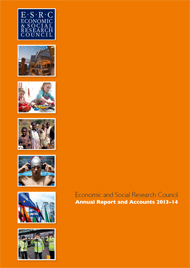
In my previous post I wrote about the Stern Review, and in particular the portability issue – whereby publications remained with the institution where they were written, rather than moving institutions with the researcher – which seemed by some distance the most vexatious and controversial issue, at least judging by my Twitter feed.
Since then there has been a further announcement about a forthcoming consultation exercise which would seek to look at the detail of the implementation of the Stern Review, giving a pretty clear signal that the overall principles and rationale had been accepted, and that Lord Stern’s comments that his recommendations were meant to be taken as a whole and were not amenable to cherry picking, had been heard and taken to heart.
Today – only ten days or so behind schedule – the consultation has been launched. It invites “responses from higher education institutions and other groups and organisations with an interest in the conduct, quality, funding or use of research”. In paragraph 15, this invitation is opened out to include “individuals”. So as well as contributing to your university response, you’ve also got the opportunity to respond personally. Rather than just complain about it on Twitter.
Responses are only accepted via an online form, although the questions on that online form are available for download in a word document. There are 44 questions for which responses are invited, and although these are free text fields, the format of the consultation is to solicit responses to very specific questions, as perhaps would be expected given that the consultation is about detail and implementation. Paragraph 10 states that
“we have taken the [research excellence] framework as implemented in 2014 as our starting position for this consultation, with proposals made only in those areas where our evidence suggests a need or desire for change, or where Lord Stern’s Independent Review recommends change. In developing our proposals, we have been mindful of the level of burden indicated, and have identified where certain options may offer a more deregulated approach than in the previous framework. We do not intend to introduce new aspects to the assessment framework that will increase burden.”
In other words, I think we can assume that 2014 plus Stern = the default and starting position, and I would be surprised if any radical departures from this resulted from the consultation. Anyone wanting to propose something radically different is wasting their time, even if the first question invites “comments on the proposal to maintain an overall continuity of approach with REF 2014.”
So what can we learn from the questions? I think the first thing that strikes me it’s that it’s a very detailed and very long list of questions on a lot of issues, some of which aren’t particularly contentious. But it’s indicative of an admirable thoroughness and rigour. The second this is that they’re all about implementation. The third is that reduction of burden on institutions is a key criterion, which has to be welcome.
Units of Assessment
It looks as if there’s a strong preference to keep UoAs pretty much as they are, though the consultation flags up inconsistencies of approach from institutions around the choice of which of the four Engineering Panels to submit to. Interestingly, one of the issues is comparability of outcome (i.e. league tables) which isn’t technically supposed to be something that the REF is concerned with – others draw up league tables using their own methodologies, there’s no ‘official’ table.
It also flags up concerns expressed by the panel about Geography and Archaeology, and worries about forensic science, criminology and film and media studies, I think around subject visibility under current structures. But while some tweaks may be allowed, there will be no change to the current structure of Main Panel/Sub Panel, so no sub-sub-panels, though one of the consultation possibilities is is about sub-panels setting different sub-profiles for different areas that they cover.
Returning all research active staff
This section takes as a starting point that all research active staff will be returned, and seeks views on how to mitigate game-playing and unintended consequences. The consultation makes a technical suggestion around using HESA cost centres to link research active staff to units of assessment, rather than leaving institutions to the flexibility to decide to – to choose a completely hypothetical example drawn in no way from experience with a previous employer – to submit Economists and Educationalists into a beefed up Business and Management UoA. This would reduce that element of game playing, but would also negatively effect those whose research identity doesn’t match their teaching/School/Department identity – say – bioethicists based in medical or veterinary schools, and those involved in area studies and another discipline (business, history, law) who legitimately straddle more than one school. A ‘get returned where you sit’ approach might penalise them and might affect an institution’s ability to tell the strongest possible story about each UoA.
As you’d expect, there’s also an awareness of very real worries about this requirement to return all research active staff leading to the contractual status of some staff being changed to teaching-only. Just as last time some UoAs played the ‘GPA game’ and submitted only their best and brightest, this time they might continue that strategy by formally taking many people out of ‘research’ entirely. They’d like respondents to say how this might be prevented, and make the point that HESA data could be used to track such wholesale changes, but presumably there would need to be consequences in some form, or at least a disincentive for doing so. But any such move would intrude onto institutional autonomy, which would be difficult. I suppose the REF could backdate the audit point for this REF, but it wouldn’t prevent such sweeping changes for next time. Another alternative would be to use the Environment section of the REF to penalise those with a research culture based around a small proportion of staff.
Personally, I’m just unclear how much of a problem this will be. Will there be institutions/UoAs where this happens and where whole swathes of active researchers producing respectable research (say, 2-3 star) are moved to teaching contracts? Or is the effect likely to be smaller, with perhaps smaller groups of individuals who aren’t research active or who perhaps haven’t been producing being moved to teaching and admin only? And again, I don’t want to presume that will always be a negative move for everyone, especially now we have the TEF on the horizon and we are now holding teaching in appropriate esteem. But it’s hard to avoid the conclusion that things might end up looking a bit bleak for people who are meant to be research active, want to continue to be research active, but who are deemed by bosses not to be producing.
Decoupling staff from outputs
In the past, researchers were returned with four publications minus any reductions for personal circumstances. Stern proposed that the number of publications to be returned should be double the number of research active staff, with each person being about to return between 0 and 6 publications. A key advantage of this is that it will dispense with the need to consider personal circumstances and reductions in the number of publications – straightforward in cases of early career researchers and maternity leaves, but less so for researchers needing to make the case on the basis of health problems or other potentially traumatic life events. Less admin, less intrusion, less distress.
One worry expressed in the document is about whether this will allow panel members to differentiate between very high quality submissions with only double the number of publications to be returned. But they argue that sampling would be required if a greater multiple were to be returned.
There’s also concern that allowing a maximum of six publications could allow a small number of superstars to dominate a submission, and a suggestion is that the minimum number moves from 0 to 1, so at least one publication from every member of research active staff is returned. Now this really would cause a rush to move those perceived – rightly or wrongly – as weak links off research contracts! I’m reminded of my MPhil work on John Rawls here, and his work on the difference principle, under which nearly just society seeks to maximise the minimum position in terms of material wealth – to have the richest poorest possible. Would this lead to a renewed focus on support for career young researchers, for those struggling for whatever reason, to attempt to increase the quality of the weakest paper in the submission and have the highest rated lowest rated paper possible?
Or is there any point in doing any of that, when income is only associated with 3 (just) and 4? Do we know how the quality of the ‘tail’ will feed into research income, or into league tables if it’s prestige that counts? I’ll need to think a bit more about this one. My instinct is that I like this idea, but I worry about unintended consequences (“Quick, Professor Fourstar, go and write something – anything – with Dr Career Young!”).
Portability
On portability – whether a researcher’s publications move with them (as previously) or stay with the institution where they were produced (like impact) – the consultation first notes possible issues about what it doesn’t call a “transfer window” round about the REF census date. If you’re going to recruit someone new, the best time to get them is either at the start of a REF cycle or during the meaningless end-of-season games towards the end of the previous one. That way, you get them and their outputs for the whole season. True enough – but hard to see that this is worse than the current situation where someone can be poached in the 89th minute and bring all their outputs with them.
The consultation’s second concern is verification. If someone moves institution, how do we know which institution can claim what? As we found with open access, the point of acceptance isn’t always straightforward to determine, and that’s before we get into forms of output other than journal articles. I suppose my first thought is that point-of-submission might be the right point, as institutional affiliation would have to be provided, but then that’s self declared information.
The consultation document recognises the concern expressed about the disadvantage that portability may have for certain groups – early career researchers and (a group I hadn’t considered) people moving into/out of industry. Two interesting options are proposed – firstly, that publications are portable for anyone on a fixed term contract (though this may inadvertently include some Emeritus Profs) or for anyone who wasn’t returned to REF 2014.
One other non-Stern alternative is proposed – that proportionate publication sharing between old and new employer take place for researchers who move close to the end date. But this seems messy, especially as different institutions may want to claim different papers. For example if Dr Nomad wrote a great publication with co-authors from Old and from New, neither would want it as much as a great publication that she wrote by herself or with co-authors from abroad. This is because both Old and New could still return that publication without Dr Nomad because they had co-authors who could claim that publication, and publications can only be returned once per UoA, but perhaps multiple times by different UoAs.
Overall though – that probable non-starter aside – I’d say portability is happening, and it’s just a case of how to protect career young researchers. And either non-return last time, or fixed term contract = portability seem like good ideas to me.
Interestingly, there’s also a question about whether impact should become portable. It would seem a bit odd to me of impact and publications were to swap over in terms of portability rules, so I don’t see impact becoming portable.
Impact
I’m not going to say too much about impact here and now- this post is already too long, and I suspect someone else will say it better.
Miscellaneous
Other than that…. should ORCID be mandatory? Should Category C (staff not employed by the university, but who research in the UOA) be removed as an eligible category? Should there be a minimum fraction of FTE to be returnable (to prevent overseas superstars being returnable on slivers of contracts)? What exactly is a research assistant anyway? Should a reserve publication be allowed when publication of a returned article is expected horrifyingly close to the census date? Should quant data be used to support assessment in disciplines where it’s deemed appropriate? Why do birds suddenly appear, every time you are near, and what metrics should be used for measuring such birds?
There’s a lot more to say about this, and I’ll be following discussions and debates on twitter with interest. If time allows I’ll return to this post or write some more, less knee-jerky comments over the next days and weeks.



 The ESRC have just announced a huge change to their standard grants scheme, and I think it’s fair to say that it’s going to prove somewhat controversial.
The ESRC have just announced a huge change to their standard grants scheme, and I think it’s fair to say that it’s going to prove somewhat controversial.